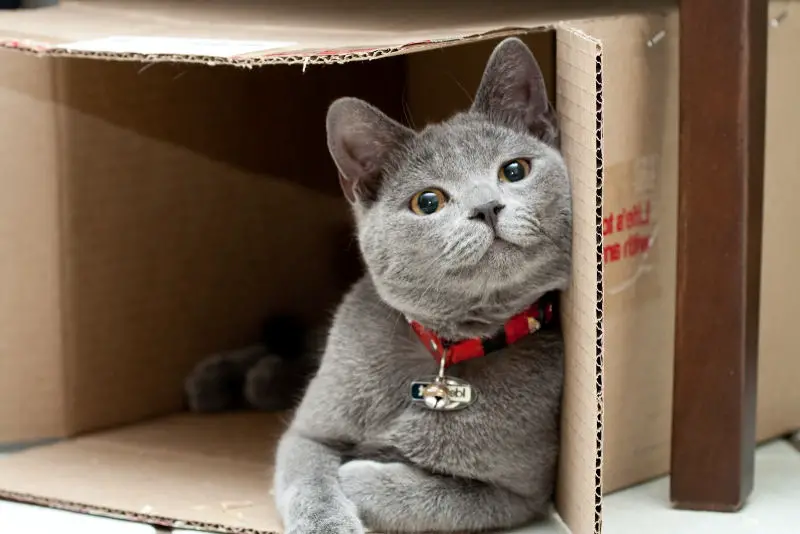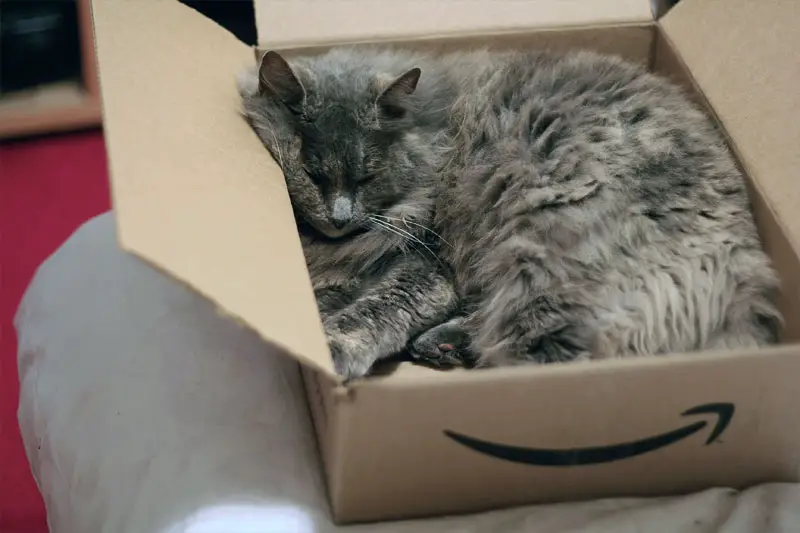
Every cat owner knows that most toys simply can’t compare to the allure of a cardboard box. This magic 4-walled enclosure seems to have the power to attract cats like bees to honey.
So what’s behind the magic? Why are our feline friends so drawn to boxes and other enclosed objects, such as bags, laundry baskets, dresser drawers, suitcases or even backpacks?

According to science adviser for the American Society for the Prevention of Cruelty to Animals {Stephen Zawistowski}, “Cats like boxes because they are cryptic animals which means they like to hide. A box gives them a place of safety and security.” Seeking out confined spaces is an instinctual behavior for cats. While inside a box, a cat feels a sense of security because they cannot be snuck up on from behind or the side. A hiding space allows them to watch the world around them without being seen.

Boxes also provide cats with a cozy, safe place to sleep, which is very important given that the felines sleep for up to 16 or more hours a day. This all seems to make sense but now there is official and scientific proof behind why cats love boxes. Researchers from the University of Utrecht in the Netherlands, have discovered why, and published their findings in the Journal of Applied Animal Behavior Science.
Guess what they found?
It turns out that cats take a liking for enclosed cardboard spaces because it helps in lowering their stress. And you thought cats didn’t experience stress. In their study, the researchers set out to determine if boxes could help in reducing stress with shelter cats. It’s well known that stressful experiences in shelters can have a major impact on cats’ health and well being.

The stress cats experience from being in a shelter can cause higher incidences of infectious diseases due to raised levels of cortisol which then causes a cat’s immune system to be compromised.
In this particular study, 19 new shelter cats were randomly assigned to either get a box or not. Ten of them were given boxes while nine were not. The cats with boxes exhibited faster recovery and adapted to their new environment much more quickly than the cats without boxes. The findings conclude that, “The hiding box appears to be an important enrichment for the cat to cope effectively with stressors in a new shelter environment in the first weeks after arrival.”

So there you have it. Cardboard boxes offer not only a secure resting place but more importantly, help reduce stress in cats. So remember, the next time you see Fluffy McMittens snoozing in a box, you’ll now understand why!



